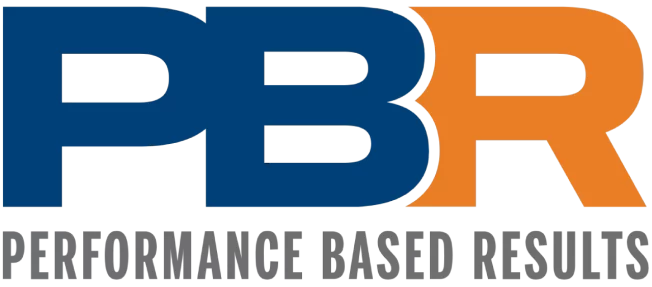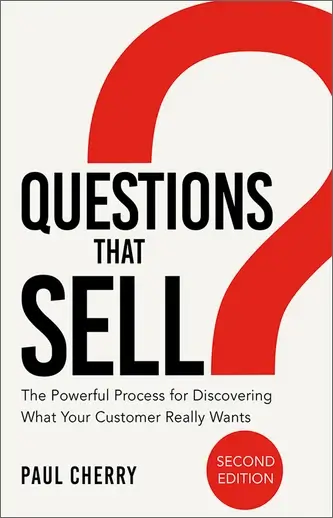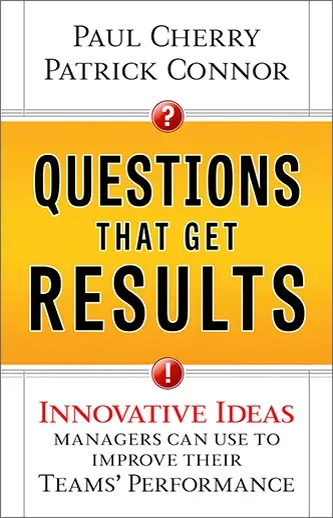In a fast-paced and ever-evolving market, crafting a thoughtful and effective sales strategy is key to driving long-term success. A solid approach goes beyond closing deals, and it’s about creating meaningful connections with clients that encourage repeat business and loyalty.
Since every client brings unique challenges and expectations, a one-size-fits-all method won’t work. Successful sales teams are able to remain adaptable while focusing on each customer’s specific needs and goals.
Understanding your customer’s unique challenges and goals is at the core of an effective sales strategy. Successful salespeople prioritize active listening and empathy, placing the client’s needs at the forefront of every conversation.
Rather than focusing solely on pushing a product, they invest time in identifying pain points and uncovering the specific outcomes the client is seeking.
Understanding Sales Approaches
Understanding the various approaches to sales is crucial for any business looking to increase its success and strengthen its relationships with clients. A key element of a successful sales approach is adaptability.
Every client is different, with unique preferences, goals, and pain points. A rigid, one-size-fits-all approach simply won’t work in today’s dynamic marketplace. Instead, sales professionals must be flexible, tailoring their methods to suit each individual client’s specific needs.
Definition of Sales Approach
A sales approach is a business or salesperson’s strategic method to engage potential clients. It presents its products or services in a way that meets the customer’s specific needs and preferences. The blueprint guides interactions with prospects, helping to build trust, showcase value, and ultimately secure a sale.
However, a successful sales approach isn’t just about making a transaction—it’s about creating a connection that can lead to long-term relationships and continued growth. To elevate these strategies, sales performance coaching plays a vital role in refining techniques and approaches.
It focuses on aligning sales tactics with the client’s perspective, ensuring that the conversation shifts from product features to how those features can solve a client’s problem or improve their business.
Why Do Sales Approaches Matter?
Sales approaches are the backbone of successful client interactions and play a pivotal role in driving business growth. A well-defined sales approach is not just a technique; it is a carefully crafted strategy that aligns with the customer’s needs, helping to bridge the gap between a product or service and the solution a client seeks.
Understanding why sales approaches matter can make all the difference in an increasingly competitive and fast-paced marketplace. The first reason sales approaches are crucial is that they personalize the customer experience.
Each client is unique, with distinct challenges and goals. A sales approach tailored to these individual factors allows businesses to connect more deeply with their customers.
Types of Sales Approaches
Sales approaches vary widely, each tailored to meet different customer needs and business goals. From consultative selling that focuses on understanding and solving client problems to solution-based selling that highlights specific product benefits, the type of approach used can significantly impact the effectiveness of a sales strategy.
Exploring these diverse methods helps businesses connect more meaningfully with clients and adapt their techniques for optimal success.
10 Effective Sales Approaches
Discovering the right sales approach can transform your business success. Numerous strategies exist, each designed to address unique client needs and market dynamics.
From consultative selling that builds deep client relationships to solution-based approaches that directly address specific problems, exploring these 10 effective sales techniques can offer valuable insights.
1. The Consultative Approach
The Consultative Approach is a dynamic and client-centered sales strategy focusing on collaboration and understanding. Unlike traditional sales methods that often emphasize pushing products or services, the Consultative Approach prioritizes the client’s needs, aiming to provide solutions that truly address their specific challenges and objectives.
At the core of this approach is active listening. Sales professionals who employ the Consultative Approach invest time in engaging with their clients to grasp their pain points and aspirations fully.
By asking insightful questions and listening attentively to the responses, they understand what the client wants to achieve.
2. The Solution-Selling Approach
The Solution-Selling Approach represents a transformative shift in how sales professionals engage with potential clients.
Rather than focusing solely on a product or service’s features, this method centers around addressing specific client challenges and providing tailored solutions that meet their unique needs. At its essence, the Solution-Selling Approach is about identifying and solving problems. Sales professionals start by deeply understanding the client’s pain points, goals, and operational hurdles.
Through thoughtful questioning and active listening, they uncover the underlying issues that the client faces. This insight is crucial, as it shifts the focus from simply selling a product to offering a strategic solution that addresses the client’s specific circumstances.
3. The Needs-Satisfaction Approach
The Needs-Satisfaction Approach to Sales focuses on meeting clients’ specific needs by offering solutions that directly address their concerns.
Rather than following a standard sales pitch, this approach emphasizes flexibility, active listening, and client-focused problem-solving, ensuring that each sales interaction is tailored to the individual customer.
A key element in mastering this approach is effective sales management training. It empowers sales leaders to guide their teams in identifying client needs through thoughtful questioning and attentive listening.
By developing these skills, sales professionals can understand the surface-level concerns and the deeper motivations driving a client’s purchasing decisions. This ensures that each solution offered is truly aligned with the client’s goals and expectations.
4. The Value-Based Approach
The Value-Based Approach to sales is centered on creating and delivering value that resonates with the customer’s specific goals and challenges.
Rather than focusing solely on product features or pricing, this method emphasizes the overall impact and long-term benefits that the solution can provide to the customer.
It’s about demonstrating how your product or service adds tangible value, whether that’s through increasing efficiency, reducing costs, or improving performance. In this approach, the sales process begins by deeply understanding the customer’s business objectives.
What does the client truly value? Is it maximizing ROI, streamlining operations, or enhancing customer satisfaction? The salesperson needs to uncover what matters most to the client in order to tailor the conversation around those priorities.
5. The Product-Oriented Approach
The Product-Oriented Approach focuses primarily on the product or service’s features and benefits.
In this method, the key selling point is the product itself, with the salesperson emphasizing its technical specifications, unique qualities, and advantages over competing solutions.
The objective is to demonstrate that the product offers superior value through its functionality, performance, and quality. This approach is relevant and necessary in many industries, particularly those with highly specialized or technical products. Customers often search for the best product on the market that meets specific requirements or solves particular challenges.
By focusing on what makes the product distinct—such as advanced technology, innovative design, or enhanced durability—the salesperson can make a strong case for why the customer should choose their solution over others.
6. The Challenger Approach
The Challenger Approach is a sales method focused on delivering valuable insights, customizing the message, and confidently steering the sales discussion.
Unlike more traditional methods, which focus on building relationships or simply meeting customer needs, this approach challenges the customer’s thinking. It encourages them to look at their business from a new perspective.
By doing so, the salesperson positions themselves as an expert and trusted advisor, offering insights the customer may not have considered. At its core, the Challenger Approach is about teaching.
Sales professionals using this method provide value from the very beginning of the conversation by sharing insights that disrupt the customer’s current way of thinking.
They offer new ideas, trends, or potential challenges the customer might face, demonstrating a deep understanding of the industry and the customer’s business.
7. The Relationship-Driven Approach
The Relationship-Driven Approach is a sales strategy that places building strong, authentic connections with clients at its core. Rather than focusing solely on products or services, this approach emphasizes the importance of trust, mutual respect, and long-term commitment.
In this approach, the key lies in becoming a partner rather than just a vendor. It’s about providing value over time, continuously offering support, insights, and solutions that align with the client’s goals.
A salesperson using the relationship-driven model is deeply invested in their client’s success, positioning themselves as a trusted advisor. This method relies heavily on empathy, active listening, and the ability to anticipate client needs, even before the client articulates them.
8. The Inbound Sales Approach
The Inbound Sales Approach is a contemporary strategy centered on drawing in and connecting with potential clients by offering meaningful, customized content, moving away from conventional aggressive sales tactics.
In this method, the salesperson plays the role of a guide, helping the customer navigate their often self-directed purchasing journey. The goal is to align the sales process with the buyer’s natural decision-making process, ensuring that they feel empowered and informed rather than pressured.
At the heart of inbound sales is the understanding that today’s buyers are more informed than ever. They conduct extensive research before engaging with a salesperson, using the internet to explore options, read reviews, and compare products.
9. The SPIN Selling Approach
The SPIN Selling Approach is a well-known sales technique designed to deepen the understanding of a customer’s needs and challenges, leading to more effective solutions.
Developed by Neil Rackham, this method focuses on four types of questions: Situation, Problem, Implication, and Need-Payoff, which help guide sales professionals through meaningful conversations with prospects.
Instead of rushing into a product pitch, SPIN Selling emphasizes understanding the client’s current situation and addressing their pain points.
The first step, situational questions, gathers background information on the client’s circumstances, helping the sales professional grasp the context in which the buyer operates.
By asking thoughtful and relevant questions, the seller builds rapport and demonstrates an interest in understanding the client’s business, which is key to tailoring an effective solution.
10. The Target Account Selling Approach
The Target Account Selling Approach is a strategic method focused on identifying, prioritizing, and engaging high-value prospects. Rather than casting a wide net, this approach emphasizes precision, concentrating efforts on accounts that are most likely to yield significant results.
By aligning sales efforts with a well-defined list of target accounts, sales teams can develop highly customized strategies tailored to these key prospects’ specific needs. A key aspect of the Target Account Selling Approach is the emphasis on research and preparation.
Sales professionals invest time in understanding the target companies in detail, their industry, business goals, challenges, and decision-making processes. This deep knowledge enables the sales team to craft personalized proposals and solutions directly addressing the client’s unique needs, positioning their product or service as the ideal fit.
How to Choose the Right Sales Approach?
Selecting the appropriate sales approach is key to aligning your strategy with your goals and meeting your client’s needs effectively. To make an informed decision, start by deeply understanding your target audience.
Know their industry, pain points, and buying behaviors. This insight will help you select an approach that resonates with their expectations, whether it’s a consultative method for complex needs or a more straightforward strategy for simpler products.
The complexity of your product or service also influences your choice. For intricate or technical offerings, a consultative or solution-focused approach might be more appropriate, as it allows for detailed discussions on how your product meets specific challenges.
Conversely, simpler products may benefit from a direct approach that emphasizes efficiency and clarity. Another important factor is the strength of your sales team. A relationship-driven approach could be ideal if your team excels at building relationships.
Analyzing Your Target Market
Understanding your target market is a crucial element in developing an effective sales strategy. It requires a detailed exploration of your potential customers to gain insights into their needs, preferences, and behaviors.
This analysis helps in customizing your approach to ensure it resonates with your audience and enhances your overall impact. Start by gathering demographic information about your target market.
Understanding these basic characteristics helps segment your market and identify which groups are most likely to benefit from your product or service. Next, delve into psychographic data, which encompasses your potential customers’ values, interests, and lifestyle choices.
Understanding Customer Behavior
Grasping the dynamics of your target market is vital for crafting a successful sales strategy. It involves thoroughly investigating your potential customers to uncover their needs, preferences, and behaviors.
This deep dive into customer profiles enables you to tailor your approach, ensuring it aligns with what drives their purchasing decisions and ultimately enhances your sales efforts.
Understanding these basic characteristics helps in segmenting your market and identifying which groups are most likely to benefit from your product or service.
Next, delve into psychographic data, which encompasses your potential customers’ values, interests, and lifestyle choices.
Adapting to Market Trends
Adjusting to market trends is key to maintaining a competitive advantage in today’s fast-changing business environment. By identifying and responding to these shifts, businesses can stay relevant, cater to evolving customer needs, and leverage new growth opportunities.
Adapting to market trends involves staying informed about the latest developments within your industry. This means continuously monitoring market research reports, industry news, and consumer behavior studies.
Staying informed about emerging trends and shifts enables you to anticipate changes before they affect your business. Understanding how these trends influence your target market is equally crucial. For instance, technological advancements might alter how consumers interact with products or services, while shifts in social trends could reshape their preferences and values.
Contact us
At PBResults, we recognize that selecting and executing the most suitable sales approach requires a blend of insight, strategy, and expertise. Our team is dedicated to providing you with the guidance and support needed to refine your sales tactics and achieve your objectives. We offer tailored solutions that address your specific challenges and opportunities, ensuring you are well-equipped to excel in a competitive market.
Contact us today to discuss how we can collaborate to enhance your sales approach and boost your success. At PBResults, we are passionate about helping businesses like yours unlock their full potential and achieve remarkable outcomes. Let us be your partner in navigating the complexities of sales and guiding you toward a brighter, more prosperous future.






